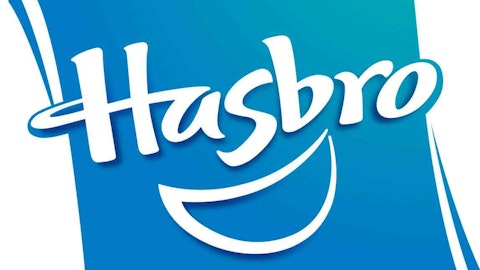Time Warner Inc. (NYSE:TWX), the world’s largest media conglomerate, is a classic example that tells us that sometimes in business, less is more. The company, formed from the merger between media titans Time and Warner, has grown as it shed excess business segments that weighed on its bottom line. Since the merger, Time Warner has spun off Time Warner Cable Inc (NYSE:TWC) and AOL, Inc. (NYSE:AOL) as separate companies. It also sold its books division.
Now, after posting strong fourth quarter earnings primarily attributed to higher network television fees and ad revenue, the company might sell a large portion of its underwhelming print media business. Wall Street definitely approves of this downsizing strategy to maximize profits, but should you? Let’s study the factors at play to gain a clearer perspective on Time Warner’s business.
Fourth Quarter Earnings and Guidance
In the fourth quarter, Time Warner posted adjusted earnings of $1.17 per share, topping the FactSet analyst consensus by 7 cents. However, revenue came in at $8.16 billion, missing the expected $8.22 billion.
For the full year, Time Warner expects to earn between $3.61 to $3.77 per share, in line with the analyst estimate of $3.66 per share.
Strong Growth in Television Networks
Time Warner’s primary growth driver during the fourth quarter was its television networks business, its largest business segment. Time Warner’s networks include cable channels TBS, TNT, CNN and premium network HBO.
Revenue at the television segment rose 5%. Distributor and subscription fees rose 7%, while ad revenue grew 3%. The robust growth was attributed to strong performance from new shows such as Dallas and returning ones such as Game of Thrones. HBO reported strong overseas growth, despite unfavorable currency impacts.
Royalties from online streaming providers, such as Netflix, Inc. (NASDAQ:NFLX) and Amazon.com, Inc. (NASDAQ:AMZN), also generated additional revenue from older shows. HBO also has a solid mobile initiative, distributing its premium streaming content through its mobile platform, HBO GO, available on iOS and Android devices.
When Bilbo Met Harry…
Time Warner’s movie studio, Warner Bros., released several successful films in the fourth quarter, including Argo and The Hobbit, but revenue from these films could not match the earning power of the Harry Potter franchise. The final Harry Potter film was released in 2011, leading to steady revenue declines at the division.
The kids ask, ‘What’s a ma-ga-zine?’
Time Warner’s weakest spot was in print media, its smallest business segment. The segment produces well-known print magazines such as Time, Sports Illustrated, Fortune, Entertainment Weekly and People. The print business posted flat subscription revenue during the fourth quarter. Revenue at the segment, which declined 6.6% in fiscal 2012, has suffered from the paradigm shift from print to Internet media. Over the past decade, the segment’s revenue declined 40%.
As a result, the print media division started a round of 500 layoffs, dismissing 8% of its staff to balance costs with decreased demand. The workforce reduction and restructuring will cost an estimated $60 million charges by the end of the year.
Time Warner is reportedly considering a sale of several of its 21 U.S. magazine titles to Meredith Corporation (NYSE:MDP), the Iowa-based publisher of Better Homes and Gardens. Meredith is interested in acquiring female-centered brands InStyle and Real Simple, and not Time Warner’s core magazines – Time, Sports Illustrated and Fortune. Time Warner is also considering a joint venture with Meredith to spin off a new company focused on women’s publications.
Putting its cash to good use
During its fourth quarter earnings announcement, Time Warner also boosted its dividend by 11% to 28.75 cents per share, which continues its four-year consecutive streak of double-digit dividend increases. It also announced a new $4 billion stock buyback to reduce outstanding shares.
Versus Competitors
Now that we understand how Time Warner generates and distributes its revenue, let’s compare its top and bottom line growth against two primary competitors – The Walt Disney Company (NYSE:DIS) and News Corp (NASDAQ:NWSA).

DIS Revenue TTM data by YCharts
Although all three companies have been growing earnings at a faster clip that revenue — a strong indicator that margins are well controlled — Time Warner’s earnings growth is the slowest. This can be attributed to its print business, which has been weighing heavily on the bottom line.
We should also compare the debt and cash reserves of all three companies over the same period.

DIS Cash and Equivalents data by YCharts
This is one area of concern for Time Warner investors — long-term debt piled up 19.37% to $19.88 billion, but cash reserves plunged 45.02% to $3.19 billion. That gives the company a debt-to-equity ratio of 66.21 — higher than both Disney and News Corp.
Lastly, we should check the stocks’ fundamental valuations to understand which is considered the cheapest at current prices.
| Forward P/E | 5-year PEG | Price to Sales (ttm) | Profit Margin | Debt to Equity | |
| Time Warner | 12.70 | 1.20 | 1.74 | 10.51% | 66.51 |
| Walt Disney | 14.20 | 1.41 | 2.31 | 13.07% | 40.25 |
| News Corporation | N/A | N/A | 1.96 | 11.65% | 55.50 |
Advantage | Time Warner | Time Warner | Time Warner | Walt Disney | Walt Disney |
Source: Yahoo Finance
Time Warner is fundamentally cheaper than Walt Disney, while News Corp. doesn’t even make the cut, since it is currently in the red. However, Disney outperforms Time Warner in two key areas — higher margins and lower debt.
The Foolish Bottom Line
Although Time Warner is ahead of News Corp., the company is stuck playing second fiddle to Disney. Like Disney, it possesses high-growth television networks. However, Disney has always been one step ahead of Time Warner in concentrating on high-growth segments — ESPN and theme parks — while divesting from slower growth ones such as movies and video games.
Time Warner is slowly but surely understanding that in the media conglomerate business, sometimes less is more. The fact that it is slimming down to its core competencies — television networks and movie studios — is extremely encouraging. However, that change will still take time, as it it stil in the early phases of divesting from its print media segment.
This isn’t the same Time Warner that wanted to control everything from print media to books to the Internet, a volatile, expensive combination that led to unpredictable margins and cash flow. This is a slimmer company that treats shareholders well with consistent dividend hikes and stock buybacks — making it a strong investment for conservative investors.
The article Time Warner Learns That Less is More originally appeared on Fool.com and is written by Leo Sun.
Copyright © 1995 – 2013 The Motley Fool, LLC. All rights reserved. The Motley Fool has a disclosure policy.



